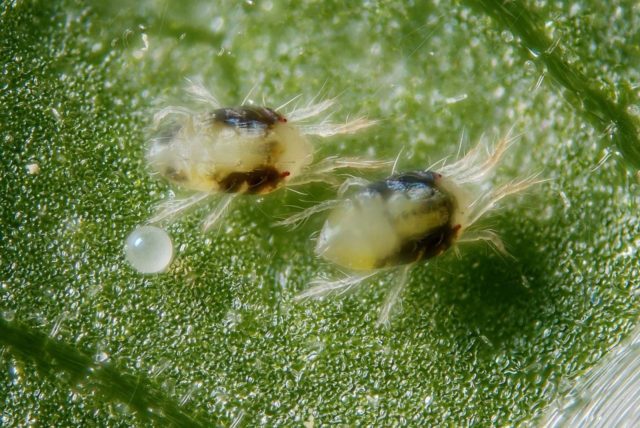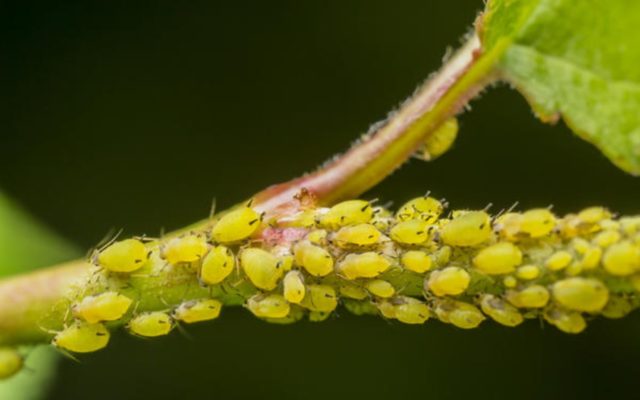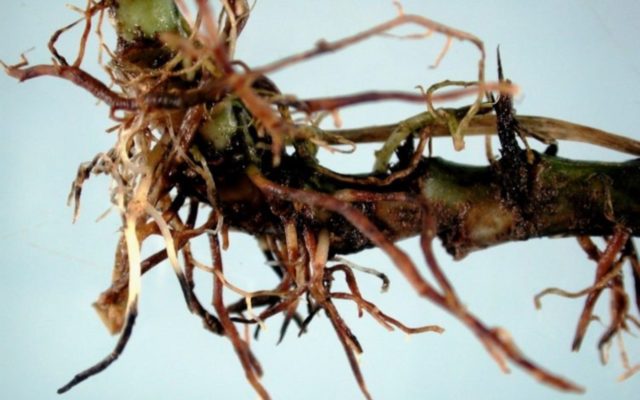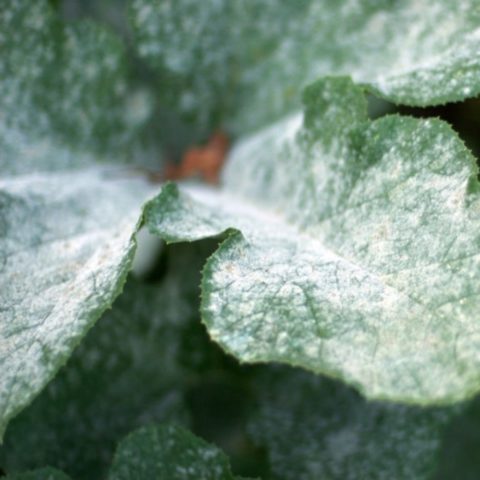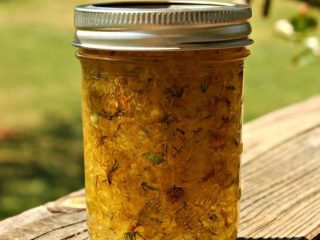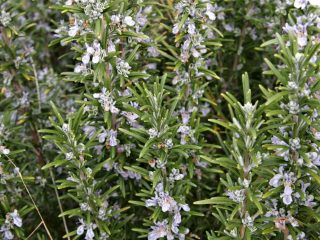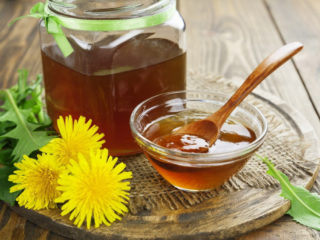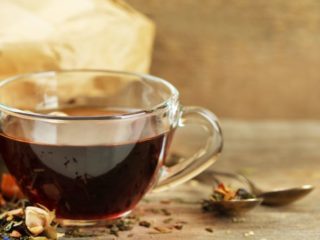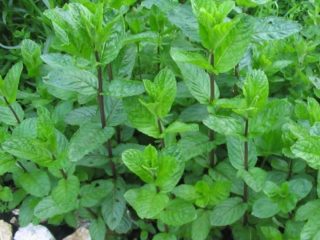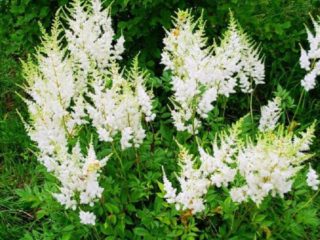Content
Kirkazon clematis or common is a herbaceous perennial. The plant is a representative of the Kirkazonaceae family. The culture is moisture-loving, so it prefers to grow in wetlands, near water bodies and on constantly moist soils. Many gardeners use clematis (Aristolochia clematitis) for landscaping. In addition, the medicinal properties of the vine are known, which increases its popularity. In various sources you can find other names for clematis grass - such as sword grass, kokornik, pinovnik, fever grass.
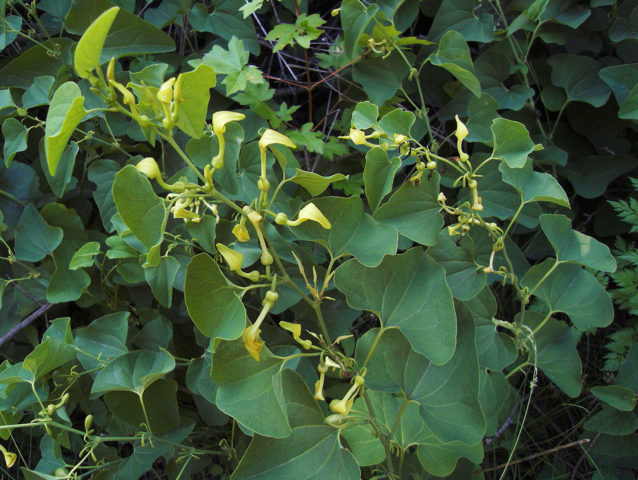
The lateral branches of the clematis perennial grow extremely rarely
Botanical description of the species
Common Kirkazon, as can be seen in the photo, is classified as a perennial herbaceous vine. The plant forms an erect, slightly twisting stem, the height of which varies between 50-90 cm. At the same time, it branches weakly, its surface is smooth.
The leaves of Kirkazon clematis are simple, medium-sized, round or heart-shaped. Arranged alternately on the stem. The length of the plates reaches 10 cm, and the width is about 6-8 cm. The leaves have long petioles, with which they are attached to the main stem. They have a matte surface, green, with a slight roughness along the edge. On the back of the plates you can see a short edge.
The root of this plant is thick and creeping. It is located in the upper layers of the soil. The flowers of the clematis are jug-shaped and yellow in color. They appear from the bases of the leaves and can be single or 2-3 pieces. simultaneously. The flowering period begins in May and lasts for 20-30 days, depending on growing conditions.
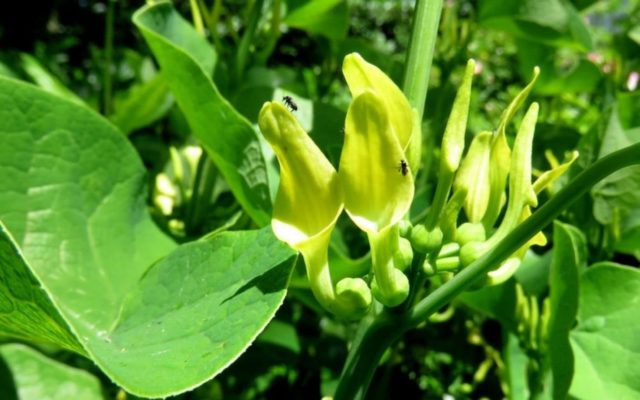
The first flowering of Kirkazon clematis occurs at the age of 5 years
At the end of flowering, the vine bears fruits in the shape of a pear-shaped hanging box, which in appearance resembles a miniature pumpkin. Inside it are wrinkled seeds. They ripen at the end of August if conditions are favorable.
Distribution area
The liana is widespread in countries with temperate climates in Europe, North America, Asia and even Africa. In Russia, the clematis plant can be found in natural conditions in the Caucasus and the south of the European part.
The plant prefers to settle on the banks of rivers, in ravines, on the edges of forests under the canopy of bushes, and in flooded meadows. If desired, the vine can be grown in the country and in the garden.
Application in landscape design
Kirkazon clematis is often used as an element of landscape design. Its leaves can successfully disguise unsightly shady areas in the garden, and thereby give them a well-groomed appearance. The advantage of this perennial is that it can grow in places where many garden crops cannot withstand and die.
A successful combination of clematis with the following garden crops:
- tall conifers;
- ornamental shrubs with bare shoots below;
- lilac;
- dicentra.
The liana is well suited to fill the background of a flower bed.
Reproduction methods
To propagate Kirkazona clematis, you can use seeds, cuttings, layering and dividing the rhizome. The first method is the most labor-intensive, so it is used extremely rarely. It is also not particularly popular, since the seeds of Kirkazon clematis rarely reach the required maturity.
For the second method, it is necessary in the spring to cut annual shoots into pieces 20 cm long. Each of them should have 2-3 internodes. Cuttings of clematis must be planted in a moistened mixture of sand and peat, deepening down to the first pair of leaves. To make them take root faster, they need to be covered with a transparent cap. Young seedlings can be planted in a permanent place only next spring.
Reproduction of clematis clematis by layering is considered one of the simplest methods. To do this, you will need to make a longitudinal ditch 10 cm deep at the base of the vine. You need to place one shoot in it, sprinkle it with earth, leaving only the top.For rooting, it is necessary to keep the soil slightly moist at all times. It is possible to separate a new seedling from the mother plant only the next year.
To propagate Kirkazona clematis by dividing the root, it is necessary to dig up the plant in early spring or autumn. Clear its underground part from the soil, and then cut it with a shovel. Each of them should have a well-developed root division and 1 shoot. After this, immediately plant it in a permanent place.
Planting and care
For clematis, it is necessary to select slightly shaded areas. The plant is not very picky about soil composition, but prefers a neutral acidity level. Also, for the full development of clematis, good soil aeration is necessary, otherwise its root will begin to rot and the plant will die.
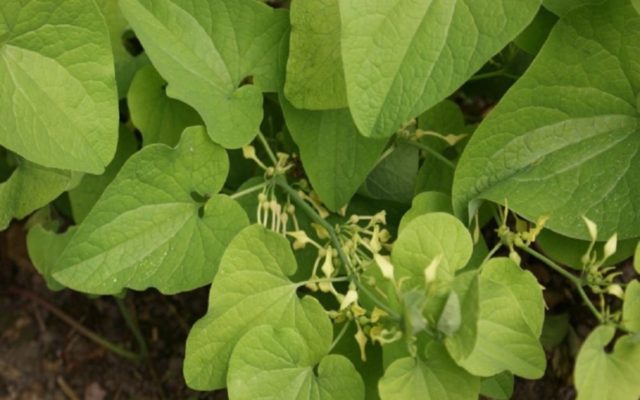
In one place, a clematis vine can grow for up to 30 years.
Landing dates and rules
Planting should be done in the spring, namely in mid-April or early May, and also in the fall - in the first half of September.
For clematis, you need to prepare a planting hole measuring 60 by 60 cm. Place a layer of broken brick 10 cm thick at the bottom, and then sprinkle it with a little sand. Fill the remaining space with a soil mixture of turf, sand, clay and humus in a ratio of 2:1:1:1. You also need to additionally add 100 g of wood ash and mix thoroughly.
Planting of clematis kirkazona is carried out according to the standard scheme. After the procedure, the plant needs to be watered abundantly and the surface of the soil at the base must be mulched with humus.This will prevent crust formation and maintain moisture and air access to the roots.
Features of care
This culture is not very demanding in terms of care. Since clematis loves moisture, in the absence of regular rains it needs to be watered periodically. This should be done 1-2 times a week, depending on the rate of evaporation. During a prolonged drought, it is also necessary to wash the leaves of the clematis plant by sprinkling, which will saturate them with moisture and wash away dust from the surface.
It is also necessary to periodically loosen the soil at the base and remove weeds in a timely manner so that they do not take away nutrients.
Once a season you need to apply organic matter to clematis. It is better to apply fertilizer during the active growing season in spring or in the first half of summer.
Preparing for winter
The adult liana of the clematis plant has a high level of frost resistance and does not suffer from temperatures dropping to -30 degrees. But young seedlings do not have such resistance. Therefore, until the age of 3 years, they need to be covered for the winter.
To do this, you should lay mulch at the base of the plant from peat and humus 5 cm thick, and also add fallen leaves on top.
Diseases and pests
This crop is susceptible to pests and diseases, like all other vines. To prevent widespread damage, it is necessary to periodically inspect the plant.
Possible problems:
- Spider mite. A small pest that cannot be seen with the naked eye. You can recognize the defeat of clematis by the depressed appearance of the plant, small yellow dots along the edge of the plates and cobwebs on the tops of the shoots. For destruction it is necessary to use the acaricide "Aktellik".
- Aphid. The insect forms entire colonies that feed on the juice of the clematis. The accumulation can be detected on the back of the plates and on young shoots. As a result of the damage, the leaves become deformed and the growth of the vine stops. To fight, you should use Inta-Vir.
- Root rot. The provoking factor for development is prolonged stagnation of moisture in the soil in cool weather. As a result of this, the root of the clematis plant rots, and the shoots turn brown at the base, and the plant eventually dies. You can save it at the initial stage of development. It is necessary to water the clematis kirkazon with the preparation “Maxim” or “Previkur”.
- Powdery mildew. It is characterized by a white coating on the surface of the leaves of the clematis, which subsequently becomes dirty gray. It interferes with photosynthesis and metabolic processes, so the plates initially bend upward and then completely wither. For treatment you need to use the fungicide "Skor".
Medicinal properties
Kirkazon clematis is one of the poisonous plants, since its parts contain alkaloids. Despite this, it is widely used in folk medicine, since when used correctly it has a healing effect.
Shoots and leaves, as well as the rhizome of Kirkazon clematis, are used as medicinal raw materials. Aboveground parts must be harvested in spring and summer during the growing season.The root should be dug up in the fall, since by this time it accumulates the maximum amount of nutrients. After collection, the raw materials must be crushed into pieces and dried at a temperature of +50-+60 degrees.
Products based on the root of Kirkazona clematis have a bactericidal and wound-healing effect. They also have diuretic and choleretic properties, they help relax the muscles of the uterus and improve the functioning of the heart muscle.
Products based on the leaves and shoots of Kirkazona clematis are used for sputum discharge, increased sweating, and also for painful menstruation. When used externally, they are effective for the treatment of boils, eczema, and itchy skin.
The use of clematis kirkazon in folk medicine
Kirkazon clematis is not used in traditional medicine. Therefore, before starting therapy using folk remedies based on it, you should consult with your doctor.
Effective recipes:
- Decoction. Pour 30 g of dried shoots and leaves of clematis with 250 ml of water, boil for 10 minutes, without letting it boil too much. Cool, clean and use to treat skin diseases. Apply lotions every 2 hours until the situation improves.
- Infusion. Pour the crushed roots (3 g) with warm boiled water (250 ml), leave for 4 hours, stir occasionally. At the end of the waiting period, clean. Take 20 ml 4 times a day for gout, diseases of the digestive organs and in the early stages of hypertension. The course of treatment is 4 days.
- Tincture. Pour in ½ tsp. collection of the herb Kirkazona clematis 100 ml of vodka. Keep in a glass container in the dark for 7 days, shaking the container periodically.Then strain and take 20 drops three times a day for painful menstruation and diseases of the respiratory system, to strengthen the immune system. The course of therapy is 5 days.
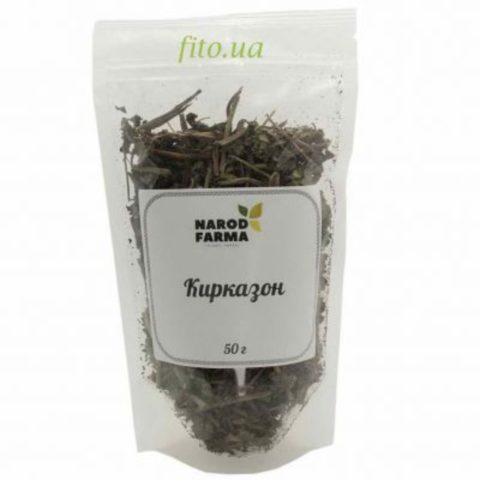
The shelf life of medicinal raw materials, Kirkazona clematis, is 2 years.
Restrictions and contraindications
When using Kirkazona clematis for medicinal purposes, caution must be exercised. In some cases, the plant can be harmful to health.
Main contraindications for use:
- individual intolerance to the component;
- chronic diseases of the digestive system during exacerbation;
- age up to 14 years;
- impaired renal and liver function.
When using folk remedies based on Kirkazon clematis, it is difficult to calculate the dosage in each specific case, taking into account concomitant diseases. Therefore, this should be done by the attending physician.
Conclusion
Kirkazon clematis is a liana that can fit into any landscape design and disguise unsightly areas in the garden. At the same time, the plant does not require special care, so it does not cause additional trouble for the gardener. In addition, the culture can be beneficial for health with proper use and storage of medicinal raw materials.
